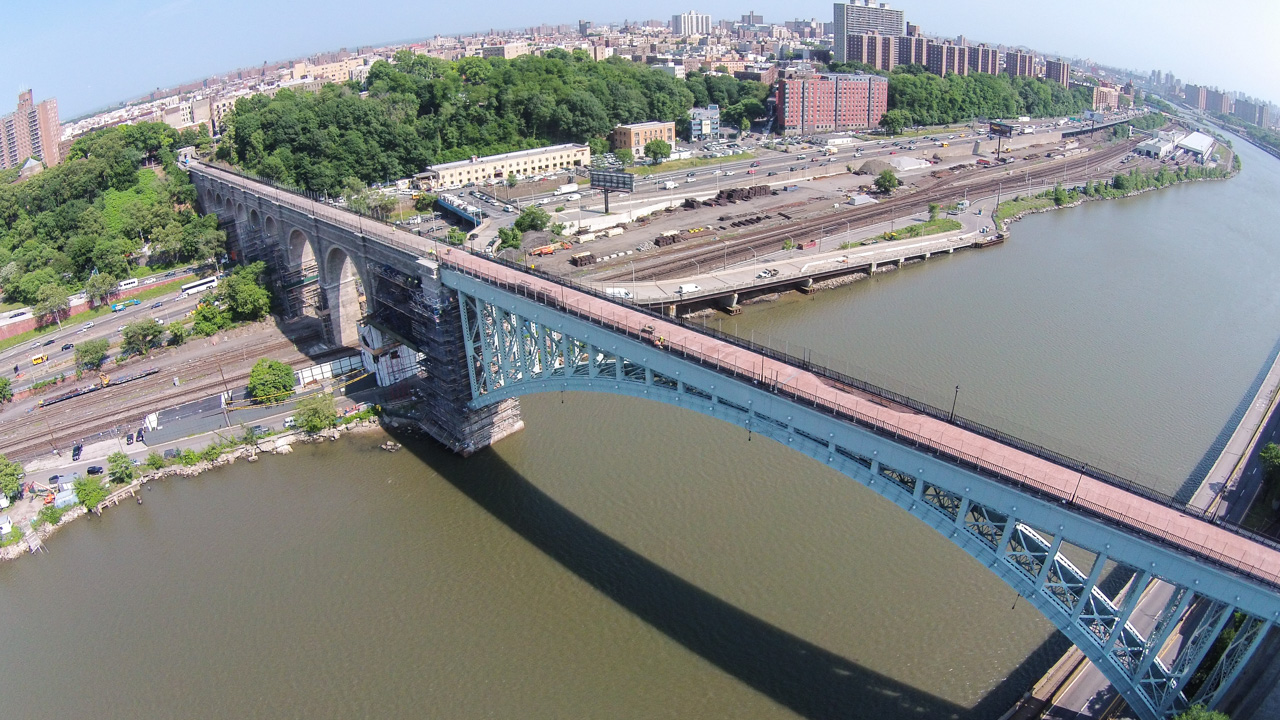Today at 10:30 AM, a ribbon cutting ceremony will formally mark the reopening of High Bridge after more than 40 years. Completed in 1848 and originally designed to help bring fresh water to the city, the historic pedestrian span was constructed over three decades before the Brooklyn Bridge existed, making it New York’s longest standing span. It stretches across the Harlem River and links the island of Manhattan with the Bronx, measuring 1,450 feet long.
That it still stands today is a feat, as there were several proposals to tear it down throughout its long history. Instead, the bridge was subjected to heavy alterations: In 1927, several of the masonry arches were removed from the Manhattan side to make navigation of the Harlem River safer as demanded by the War Department. A single steel span was fused to the existing structure.
Despite all its documentation from 1848 on, the Roman-style aqueduct was closed to the public. Exactly when and why is up for debate. According to Wikipedia, “In the 1950s, pedestrians threw objects from the bridge that wounded passengers on a tour boat, and the bridge was closed. [citation needed].”
But the NYC Parks Department, which was given custody of the bridge in 1937 by the now defunct Department of Water Supply, Gas and Electricity, tells ANIMAL it may have shuttered a decade later: “While Parks does not know a confirmed date of the High Bridge closing, we believe it was in the 1960s. Unfortunately, no records exist affirming when it closed for good. At that time, the city lacked the funds and the resources to maintain and patrol the bridge, so it gradually fell into decay before closing due to this lack of interest.” The New York Times says the “bridge fell into disrepair and closed for good in the early 1970s” in some articles and the “1960s” in others.
Decades later, after several setbacks, funding to the tune of $61 million was secured for its renovation.
With High Bridge’s reopening, maybe the span will again gain the cultural significance it once had. “Every resident of the city knows where High Bridge is, no matter how dense his ignorance may be as to other points of the water-service,” wrote Scribner’s Monthly in 1877.


